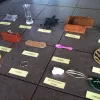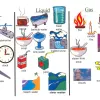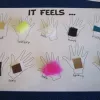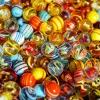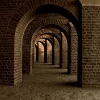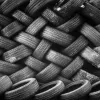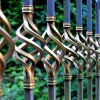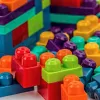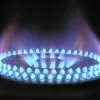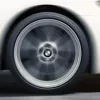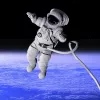Important update from TheSchoolRun
For the past 13 years, TheSchoolRun has been run by a small team of mums working from home, dedicated to providing quality educational resources to primary school parents. Unfortunately, rising supplier costs and falling revenue have made it impossible for us to continue operating, and we’ve had to make the difficult decision to close. The good news: We’ve arranged for another educational provider to take over many of our resources. These will be hosted on a new portal, where the content will be updated and expanded to support your child’s learning.
What this means for subscribers:
- Your subscription is still active, and for now, you can keep using the website as normal — just log in with your usual details to access all our articles and resources*.
- In a few months, all resources will move to the new portal. You’ll continue to have access there until your subscription ends. We’ll send you full details nearer the time.
- As a thank you for your support, we’ll also be sending you 16 primary school eBooks (worth £108.84) to download and keep.
A few changes to be aware of:
- The Learning Journey weekly email has ended, but your child’s plan will still be updated on your dashboard each Monday. Just log in to see the recommended worksheets.
- The 11+ weekly emails have now ended. We sent you all the remaining emails in the series at the end of March — please check your inbox (and spam folder) if you haven’t seen them. You can also follow the full programme here: 11+ Learning Journey.
If you have any questions, please contact us at [email protected]. Thank you for being part of our journey it’s been a privilege to support your family’s learning.
*If you need to reset your password, it will still work as usual. Please check your spam folder if the reset email doesn’t appear in your inbox.
Materials
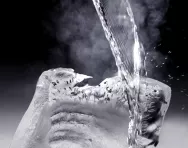
A material is any substance that has a name. For example: chalk, paper, wood, iron, air, water, clay, plastic, rubber, stone, leather, wax.
Everything is made up of materials. When we want to make something we need to choose the best material for the job.
The property of a material is something about it that we can measure, see or feel and helps us decide whether or not it is the best material.
Most materials have more than one property and can be natural, man-made, strong, weak, heavy, light in weight, rough, smooth, shiny, dull, hard, soft, flexible, brittle, magnetic, non-magnetic, transparent, opaque, electrical conductor, electrical insulator, conductor of heat, thermal (heat) insulator, burns when heated, does not burn, melt easily or not melt easily.
Materials exist in three states: a solid, a liquid or a gas. Materials can sometimes be changed from one state to another, perhaps by heating them – for example, ice is a solid which becomes a liquid when it’s heated.
Top 10 facts
- Plastic is made from oil – we now use about 20 times more plastic than we did 50 years ago.
- While aluminium is the most common metal found in the Earth's crust, the most common metal found on our planet is iron, mostly because it makes up such a large part of the Earth's core.
- Tungsten has a very high melting point (after carbon the second-highest melting point of all elements).
- Wool is an insulator and is used for making warm clothes and blankets. It resists water when in its natural state, without the oil removed.
- All matter exists as solids, liquids, or gases. These are called the states of matter. Matter can change from one state to another if heated or cooled. If ice (a solid) is heated it changes to water (a liquid). If water is heated, it changes to steam (a gas). The particles of ice, water, and steam are identical, but arranged differently.
- We can use many natural materials and by working with them change them into man-made substances, for example paper is made from wood.
- On average every UK family uses around 330 glass bottles and jars every year. Glass bottles and jars can easily be recycled to make new glass bottles and jars or used in industry as aggregate (building material) or sand.
- Hardness is a measure of how easily a material can be scratched. The Mohs hardness scale arranges 10 minerals from 1 to 10. The higher the number, the harder the mineral. Each mineral in the scale will scratch all those below it. Other materials can be compared to these minerals. Copper, for example, has a hardness of 2.5.
- Mercury is a liquid metal that is poisonous. When mercury is dropped onto a surface, it rolls off in little balls. This is because the forces between the mercury particles are very strong, so the particles clump together.
- The energy saved from recycling one plastic bottle can power a 100 watt light bulb for almost an hour.
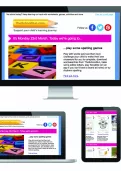
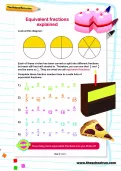
Boost Your Child's Learning Today!
- Start your child on a tailored learning programme
- Maths & English resources delivered each week to your dashboard
- Keep your child's learning on track
Did you know?
- Some solids can be hammered or squashed into many different shapes without breaking. They are known as malleable materials. Other solids, such as biscuits or glass, will not bend when hammered or squashed, but will break and split. These materials are brittle.
- Shape memory metals can ‘remember’ their shape. When brought to a certain temperature, these metals can be set to a shape that they never forget. They have many uses, including repairing broken bones. Even if the bones move, the metal always returns to its original shape, bringing the bones back to their correct position and helping it to heal.
- A measure of how fast or slowly a liquid can flow is its viscosity. Crude oil, for example, is a liquid that does not flow very easily. It is said to have high viscosity. Heating crude oil lowers its viscosity and enables it to flow more freely through pipes. Other liquids, such as water, flow easily without being heated. Water has low viscosity.
Look through the gallery and see if you can spot the following:
- Materials can be sorted according to their properties
- Everything is a solid, liquid or a gas
- Materials can feel very different
- Glass marbles
- Brick and stone buildings
- Wool toys
- Rubber tyres
- Metal railings
- Plastic building blocks
- States of matter: gas
- States of matter: liquid
Gallery
About
Everything you can hold, taste, or smell is made of matter.
Matter makes up everything you can see, including clothes, water, food, plants, and animals. It even makes up some things you cannot see, such as air or the smell of perfume. You can describe a type of matter by its material properties such as its colour or how hard it is. Matter is made up of particles so tiny that only the most powerful microscope can see them.
Different types of matter have different material properties that make them useful for different jobs. A plastic hosepipe is flexible, so it can be pointed in any direction. A perspex visor is transparent, so the wearer can see straight through it. A firefighter’s suit is shiny so it can reflect heat and light. Flexibility, transparency, and shininess are three examples of material properties.
Solids are one of the three states of matter and, unlike liquids or gases, they have a definite shape that is not easy to change. Different solids have particular properties such as stretch, strength, or hardness that make them useful for different jobs. Most solids are made up of tiny crystals.
Liquids flow and do not have a fixed shape. Instead, they take on the shape of whatever container they are in. If you pour a liquid from a glass onto a plate, the volume of liquid (the space it takes up) stays the same, but its shape changes.
Gases are all around us, but although many, such as perfume, can be smelt, most gases are invisible. Like liquids, gases can flow but, unlike solids or liquids, gases will not stay where they are put. They have no set shape or volume, and they expand in every direction to fill completely whatever container they are put into. If the container has no lid, the gas escapes.
Some materials can be changed. They can be mixed with other materials (for example when the ingredients are mixed together to make a cake) and then changed again by heating. Because this change cannot be ‘undone’ we say that it is irreversible. Some changes, though, are reversible. For example, when ice is heated it melts and becomes water, but this change can be reversed by re-freezing the water into ice.
Some materials are particularly well-suited to a certain job. For example, certain kinds of metal, such as copper or aluminium, are extremely efficient conductors of electricity (this means electricity passes well through them). Therefore, these are the metals most likely to be used for electrical cables. Because plastic and rubber do not conduct electricity, they are used to wrap the cables of electrical items we use around the house.
A solution is a specific type of mixture where one substance is dissolved into another. A solution is the same, or uniform, throughout which makes it a homogeneous mixture. One example of a solution is salt water which is a mixture of water and salt. You cannot see the salt and the salt and water will stay a solution if left alone. A solution is made when one substance called the solute "dissolves" into another substance called the solvent. Dissolving is when the solute breaks up from a larger crystal of molecules into much smaller groups or individual molecules. This break-up is caused by coming into contact with the solvent.
Words to know:
conductor - a substance, body, or medium that allows heat, electricity, light, or sound to pass along it or through it
dissolved - to become absorbed in a liquid solution, or make a solid do this
flexibility - able to bend or be bent repeatedly without damage or injury
gas - a substance that is neither a solid nor a liquid at ordinary temperatures and has the ability to expand infinitely, e.g. air
homogeneous - having the same kind of constituent elements, or being similar in nature
irreversible - impossible to reverse or undo
liquid - a substance in a condition in which it flows, that is a fluid at room temperature and whose shape but not volume can be changed
malleable - describes a metal or other substance that can be shaped or bent without breaking
man-made - made by human beings and not occurring naturally
material - the substance used to make things
microscope - a device that uses a lens or system of lenses to produce a greatly magnified image of an object
natural - present in or produced by nature, not artificial or synthetic
particle - a very small piece of something
property - a characteristic quality or distinctive feature of something
reversible - able to be changed or undone
solid - of a shape that resists change, unlike a liquid or gas
solution - a substance consisting of two or more substances mixed together
transparency - the quality or state of being transparent or see-though
viscosity - the property of a fluid or semifluid that causes it to resist flowing
Related Videos
Just for fun...
- Changing the state of water interactive game
- Play the reversible & irreversible changes game
- Solid, liquid and gases game
- Online game: keeping warm
- Material melting points interactive game
- Make non-Newtonian fluid (a liquid that doesn't act like a liquid!)
Best kids' books about materials
Find out more
- Watch BBC Bitesize classroom clips about materials and their properties and BBC Bitesize animations about materials for KS1
- Watch kids' videos about properties of matter, material properties and purposes and classification of materials
See for yourself
- Find out about states of matter
- Try some practical science experiments: look through all our KS1 and KS2 materials worksheets or try one of TheSchoolRun's at-home science experiments (Experiments and science fun for KS1 and KS2, a subscriber resource).
